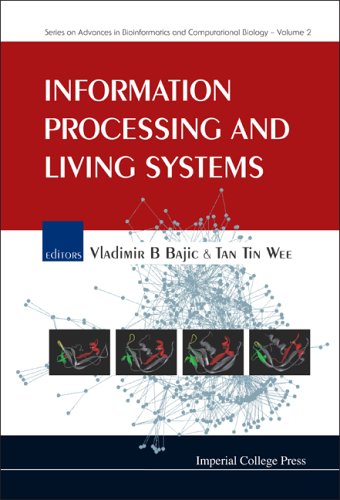

Most ebook files are in PDF format, so you can easily read them using various software such as Foxit Reader or directly on the Google Chrome browser.
Some ebook files are released by publishers in other formats such as .awz, .mobi, .epub, .fb2, etc. You may need to install specific software to read these formats on mobile/PC, such as Calibre.
Please read the tutorial at this link: https://ebookbell.com/faq
We offer FREE conversion to the popular formats you request; however, this may take some time. Therefore, right after payment, please email us, and we will try to provide the service as quickly as possible.
For some exceptional file formats or broken links (if any), please refrain from opening any disputes. Instead, email us first, and we will try to assist within a maximum of 6 hours.
EbookBell Team

0.0
0 reviewsThis book focuses on information processing by life forms and the use of information technology in understanding them. Readers are first given a comprehensive overview of biocomputing before navigating the complex terrain of natural processing of biological information using physiological and analogous computing models. The remainder of the book deals with artificial processing of biological information as a human endeavor in order to derive new knowledge and gain insight into life forms and their functioning. Specific innovative applications and tools for biological discovery are provided as the link and complement to biocomputing.
Since artificial processing of biological information is complementary to natural processing, a better understanding of the former helps us improve the latter. Consequently, readers are exposed to both domains and, when dealing with biological problems of their interest, will be better equipped to grasp relevant ideas.
Contents: A Multi-Disciplinary Survey of Biocomputing: Molecular and Cellular Levels; A Multi-Disciplinary Survey of Biocomputing: Systems and Evolutionary Levels, and Technological Applications; Models for Complex Eukaryotic Regulatory DNA Sequences; An Algorithm for Ab Initio DNA Motif Detection; Detecting Molecular Evidence of Positive Darwinian Selection; Molecular Phylogenetic Analysis: Understanding Genome Evolution; Constructing Biological Networks of Protein Protein Interactions; Computational Modelling of Gene Regulatory Networks; Overview of Text-Mining in Life Sciences; Integrated Prognostic Profiles: Combining Clinical and Gene Expression Information through Evolving Connectionist Approach; Databases on Gene Regulation; On the Search of Better Validation and Statistical Methods in Microarray Data Analysis; Information Extraction from Dynamic Biological Web Sources; Computer Aided Design of Signaling Networks; Analysis of DNA Sequences: Hunting for Genes; Biological Databases and Web Services: Metrics for Quality.